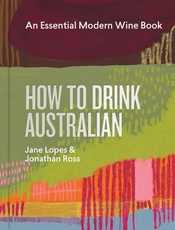I know, I know...we’re into February, and the conventional time for making resolutions is more than a month behind us. But if you belong to a gym, look at all the now-unused exercise equipment that was mobbed a month ago and you’ll see conclusive proof that resolutions that hold their resolve are ones that are mulled over at length and then kicked into gear right about now.
Right now is a perfect time to join me in my resolution to devote sharp attention in the year ahead to the wines of Australia’s state of Victoria. The most important reasons for this are provided by the wines themselves: They are highly varied and yet also sharply place-specific due to the many different appellations, micro-climates, and soil concentrations. Many are very fresh in a contemporary, cool-climate style that stands in contrast to the sometimes-soupy Shiraz behemoths that were once Australian wine’s calling card. Yet most of the wines deliver abundant flavor despite their freshness and verve, and the range of grape varieties that can excel somewhere in the state is truly remarkable. That’s great for more adventuresome wine lovers, but those more inclined to concentrate can also take a very deep dive into the Burgundian varieties of Chardonnay and Pinot Noir and find lots of examples that

can be described as “Burgundian” with a straight face—which simply isn’t true in most global locations where these grapes are grown.
Commercial and political considerations are not as sexy as vinous ones for recognizing the present as a time for wines from Victoria to shine, but neither are they without importance. Australia has been engaged in a trade war with China for several years, one that entailed a virtual ban on Aussie wine imports into China—which was the Australia’s leading market across the world. That has freed up wines that were simply unavailable here in the USA, and though there are signs that the trade dispute may end before long now, one suspects that Australia’s wine industry will remain strongly motivated to diversify its global market presence.
Timing is now particularly auspicious for the American market to be receptive to a resurgence of Aussie wines generally and ones from Victoria specifically. “Auspicious” may not be quite the right word, as what’s happening now is less the advent of something wonderful than the passage of something that was borderline tragic. The sad fact is that the amazing commercial success of...gulp...Yellow Tail had the effect of making almost a whole generation of young consumers think of Aussie wine as cheap plonk.
This phenomenon might not suit your idea of a “tragedy,” I admit. But for someone like me—who traveled to Australia six times to really learn about appellations and boutique producers to help inform American wine lovers of the multiplicity of riches to be enjoyed—it was heartbreaking to see a single, formulaic brand mislead Americans into painting an entire continent’s industry with a single, blandly broad brush.
I don’t mean to be overly dramatic, and I don’t blame anybody for the sad fact that Aussie wine suffered a ghastly setback just as it was poised to attain its rightful place near the pinnacle of excellence in the minds of American consumers. The key difference between a tragedy and an atrocity is that tragedies aren’t anybody’s fault—they just happen—as Aeschylus or Euripides can inform you. Hey, I drank jugs of Concha y Toro when a was flat broke in graduate school, so I don’t look down on Yellow Tail buyers. But just as it took almost a generation for great wines from Chile like Almaviva, Don Melchior, Seña and Chadwick to become collectable icons, we’ve simply had to wait for Australia’s nightmare to pass. Time doesn’t heal everything, but some things can’t be healed by anything but time.
Over the span that has brought us to the present, it is no secret that climate change has been a major variable in its own right, quite aside from commercial factors. As it happens, it is a variable that has actually aided wine quality in Victoria even as it has imperiled other Australian regions that aren’t as far south in the direction of Antarctica and the cold Southern Ocean.
Over the months ahead, I look forward to putting a lot of specific “flesh” on the “bones” of these introductory observations in the form of specific wine recommendations. I’ve already got notes on quite a number of wines for that purpose, but for now, I’ll leave this as a “teaser.” If you wish to do a little thinking ahead of your drinking, I can highly recommend the recently published (2023) How to Drink Australian by Jane Lopes and Jonathan Ross (along with a few supplementary contributors). At nearly 500 pages, it is a terrific reference to the current state of the art in Australian wine, yet it is written and set out in an inviting and informal manner in keeping with Aussie wine culture. Available for less than $40 even in hardcover on Amazon, it is a terrific investment toward a future of deliciousness and fun.
All for now, but more to come!